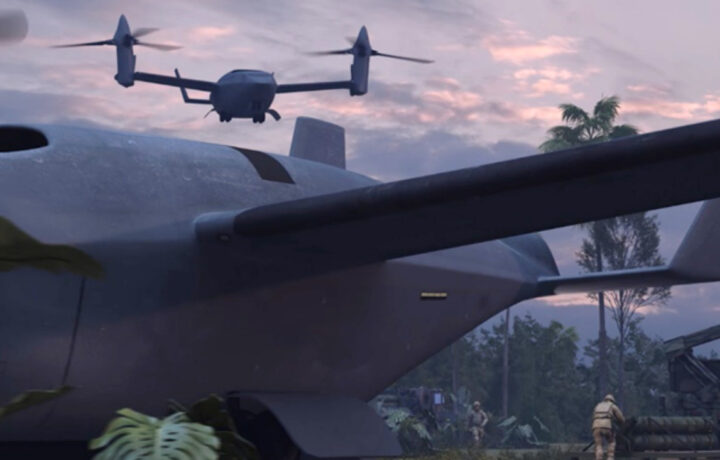Boeing subsidiary Aurora Flight Sciences awarded a Defense Advanced Research Projects Agency (DARPA) Phase 1B contract for the Speed and Runway Independent Technologies (SPRINT) project to develop a high-speed, vertical lift aircraft. As previously reported, Aurora unveiled its refined concept of its fan-in-wing high-speed vertical takeoff-and-landing (VTOL) aircraft, and it will now receive funding to proceed to a preliminary design review.
The program entered its initial Phase 1 last November, with four companies selected to take part, including Aurora Flight Sciences, Bell Textron, Inc., Northrop Grumman Aeronautic Systems, and Piasecki Aircraft Corporation. It was announced last week that the latter two firms were eliminated from the competition, while Bell Textron will now also receive a Phase 1B contract.
“The SPRINT program entered Phase 1 on November 1, 2023. As of May 2024, two performers – Aurora Flight Sciences and Bell Textron, Inc. – have been awarded contracts for Phase 1B. Performers have approximately one year to complete preliminary design work for their aircraft,” a DARPA spokesperson first told Breaking Defense.
As it currently stands, Aurora and Bell will be the only two planned companies taking part in Phase 1B.
Bell’s HSVTOL
During the initial Phase 1A of the program, Bell engaged in a conceptual design review of its SPRINT X-plane. According to the company, it has already completed risk reduction of an aircraft that employs a folding rotor, integrated propulsion, and flight control technologies. It builds on Bell’s High-Speed Vertical Takeoff and Landing (HSVTOL) technology and past X-plane experience and incorporates the hover capability of a helicopter with the speed (400+ knots), range, and survivability of jet aircraft.
The Bell design features a folding rotor system that can pivot from vertical lift to propeller mode, similar to the U.S. military’s V-22 Osprey, while a jet turbofan can then be employed for high-speed flight.
“Bell is honored to be selected for the next phase of this revolutionary program and ready to execute preliminary design,” Jason Hurst, executive vice president of engineering at Bell, said in a statement. “We completed our initial risk reduction efforts with our sled test demonstration at Holloman Air Force Base, and we look forward to building on this success with our continued work with DARPA.”
The Bell design also differs slightly from the Aurora concept, which features a blended wing body that could allow it to reach a cruising speed of 450 knots. The aircraft would be capable of short take-off and vertical landing (STOVL), super short take-off and landing (SSTOL), and conventional take-off and landing.
A SPRINT to the Finish?
The SPRINT program is now being jointly run by DARPA and the U.S. Special Operations Command to design, build, and fly an X-plane to demonstrate the key technologies and integrated concepts that enable a transformational combination of aircraft speed and runway independence.
According to DARPA, the SPRINT X-plane will serve as a proof-of-concept technology demonstrator while its flight test program seeks to validate enabling technologies and integrated concepts that can be scaled to different-sized military aircraft. The overreaching goal of SPRINT is to provide the aircraft with the ability to cruise at speeds from 400 to 450 knots at relevant altitudes and also to hover in austere environments from unprepared surfaces where it can offer air mobility in Special Operations Forces (SOF) missions.
Though not exactly a marathon, Phase 1B isn’t exactly a sprint either. Aurora and Bell have reportedly been given approximately a year to complete the Phase 1B, and that follows the six-month timeframe of Phase 1A for conceptual design.
Whether it results in an actual aircraft or remains more of a proof-of-concept has yet to be determined, but it comes after the U.S. Army canceled its Future Attack Reconnaissance Helicopter program, which has left operators – notably special forces – rely largely on legacy platforms. Moreover, as Breaking Defense further reported, such a high-speed VTOL aircraft could be seen as increasingly important in the Indo-Pacific, where runways are far and few between. Such an aircraft could operate from a variety of naval vessels as well as from remote airstrips.




